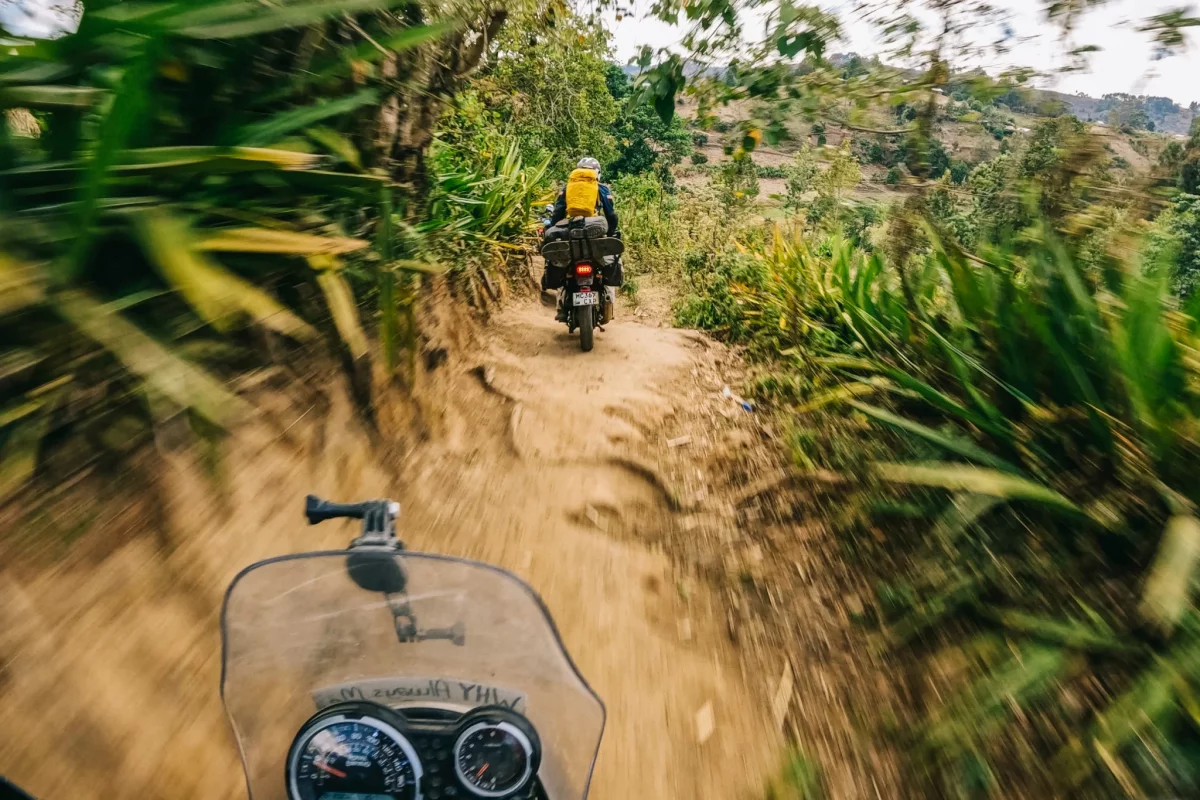“Throttle through it!” Josh barked through our Bluetooth headsets, watching as my back tire fishtailed in six inches of sand.
“It’s soft on this corner too,” Marlin warned, less than 10 yards ahead of us.
Even with knobby tires, our motorcycles struggled as they lost purchase to the ground below. Riding in sand is a game of maintaining both speed and balance—not overcorrecting, not allowing the bike to bog, not spinning the tires. Complicating matters, we each had 60-plus pounds of food, clothes, and camping gear in our rear saddlebags. If momentum veered the wrong way, it was game over.
The solution to this wobble, counterintuitively, is to hit the gas. The physics of it still don’t make sense to me, but it doesn’t matter. It works just about every time. I heeded Josh’s advice and punched it.
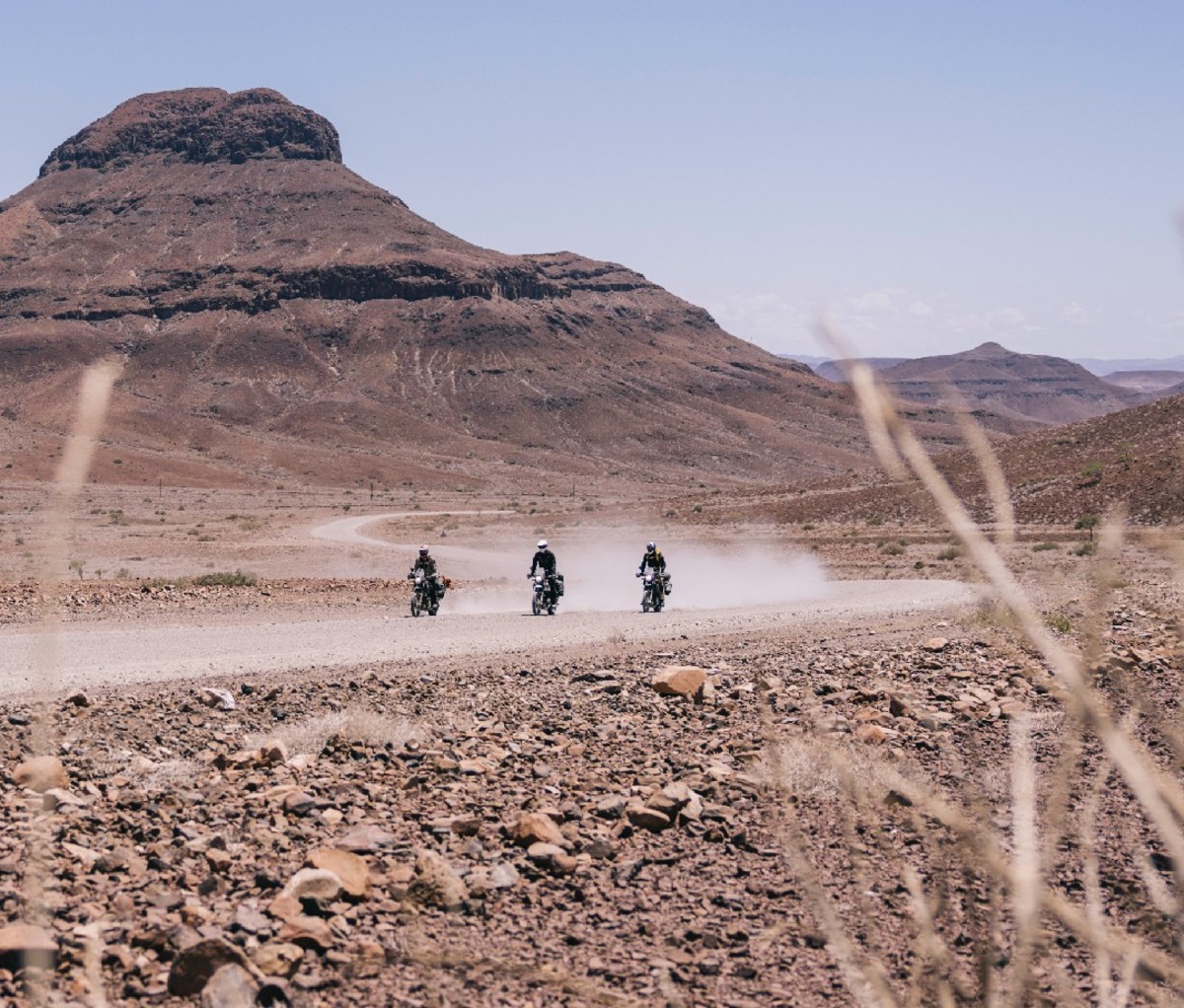
The Namib desert is one of the least inhabited places in the world, with only a few settlements of pastoral farmers across a large swatch of southwestern Africa. It stretches from sub-Saharan Angola almost to the southern terminus of the continent, part of the way down South Africa. We often rode 100 miles or more without seeing another soul. Suffice to say, it lives up to the name’s origin—“vast place.”
As the oldest and driest desert on the planet, it’s essentially an ocean bed above sea level, with sand dunes that stretch for dozens of miles and mountains that appear to be shaped by prehistoric wind and waves. Depending on who you’re talking to, riding motos across the Namib is either a bucket list goal or an absolute fool’s errand. At that point in our trip, I wasn’t sure which side of the debate I fell on.
What I did know is that the Namib converted the next 1,000 miles of our journey. In other words, I had better figure out how to ride in sand, and soon.
Seconds later, I repeated the balancing exercise, downshifting to keep the RPMs high and throttling through the loose corner. As I rounded the bend I looked up, only to see sand for hundreds of yards in front of us. “We’re really in it now,” laughed Sean, as he led the way into a real world Sarlacc Pit.
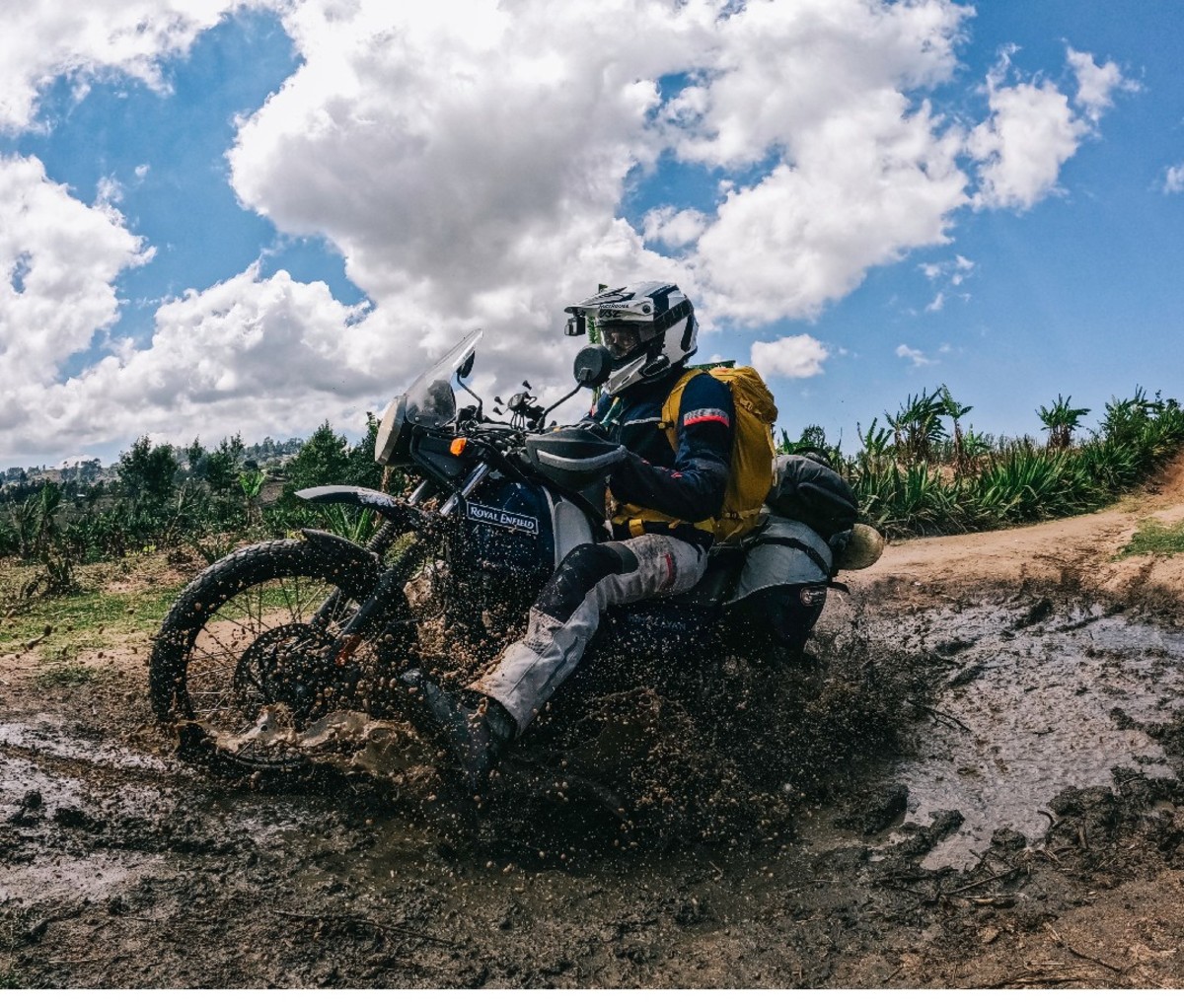
Lesson #1: If You’re Going to Do Something Stupid, Bring a Good Attitude
The only way was forward. We didn’t have the gas or the time to turn around. That left me with two options—complain about my impending doom or laugh about it as I figured it out. The former is easy, but I knew it wouldn’t get me anywhere. So, I jokingly asked Josh to write me a good eulogy and continued on.
The sand got progressively deeper, slowing us to a near glacial pace. We buried a few back tires and nearly laid the bikes over more than once, but none of it mattered. Lost in remote southwestern Namibia, we had nowhere to be, no one to prove anything to, and no ego left to care about.
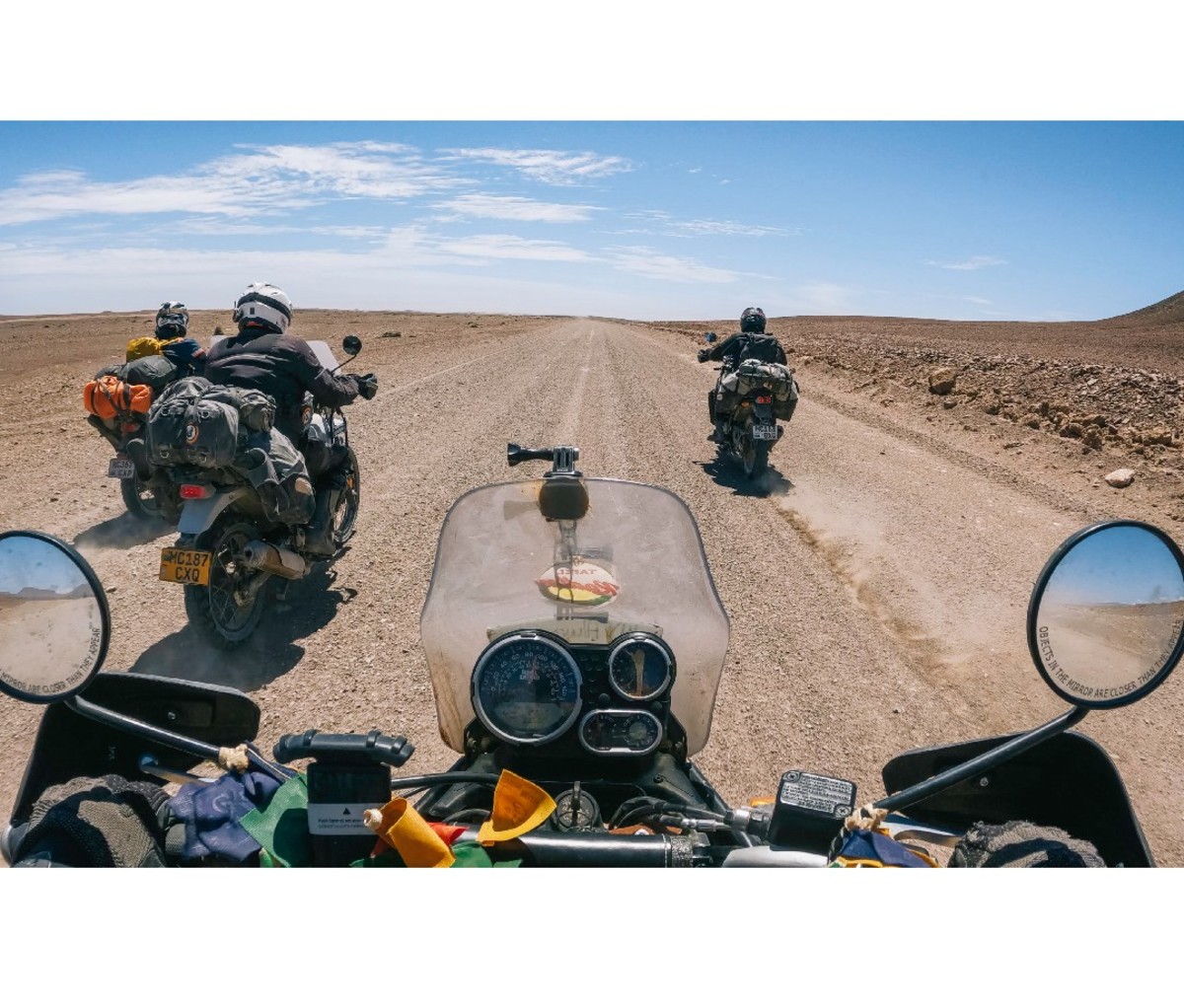
The jokes flew back and forth, spliced between laughter and moral support. This was a group effort, physically and mentally. And eventually, over the next hill, we found solid ground again. Clearly we could get through just about anything if we stayed positive.
That moment sufficiently summed up the entire trip. A lot went wrong: flat tires, reroutes, and a number of close calls—all of which we laughed off. There’s a calmness in knowing that your crew has your back. There’s a lightness in realizing that the worst moments always pass. There’s a freedom in learning that most problems don’t have a single right answer. Thick mud, deep sand, lightning storms, food poisoning, and bike trouble are all solvable problems, provided your group sticks together.
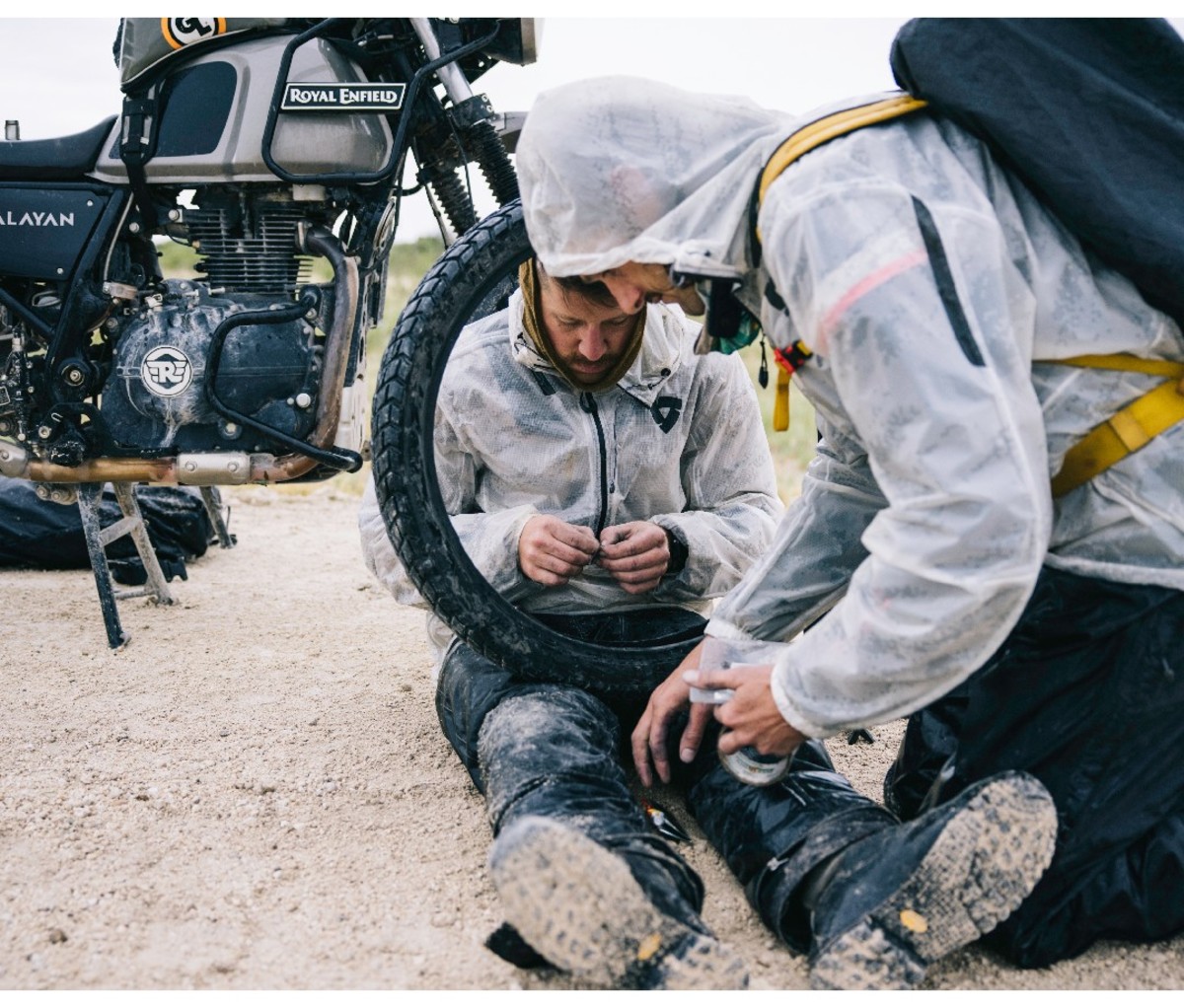
Lesson #2: Plan Ahead, but Save Some Room for Creativity
Let’s go back to the beginning and how we got into this mess. Two weeks earlier, we’d touched down in Arusha, Tanzania, clean cut and naively optimistic for the journey ahead. The four of us, close friends and frequent adventure partners, had spent the last half year planning this moto trip across Africa. That may sound like a lot of time, but for something of this magnitude, it turns out it really isn’t.
We divvied up the to-do list, researching routes, collecting the right gear, building out a spare parts list and repair kit, figuring out visas and vaccinations, and petitioning bosses for PTO. We moved fast, putting together a month-long, self-supported motorcycle ride across the southern half of Africa, but in all honesty, we didn’t know what to expect.
We had the gear, riding experience, and GPX routes on our nav, but that’s just table stakes. There wasn’t a playbook for what we were about to get into—nor did we want one. We didn’t fly across the world to follow someone else’s path, repeat their experiences, and post the same photos to the ‘gram. We wanted to do it our way, get lost a few times, and figure it out as we went.
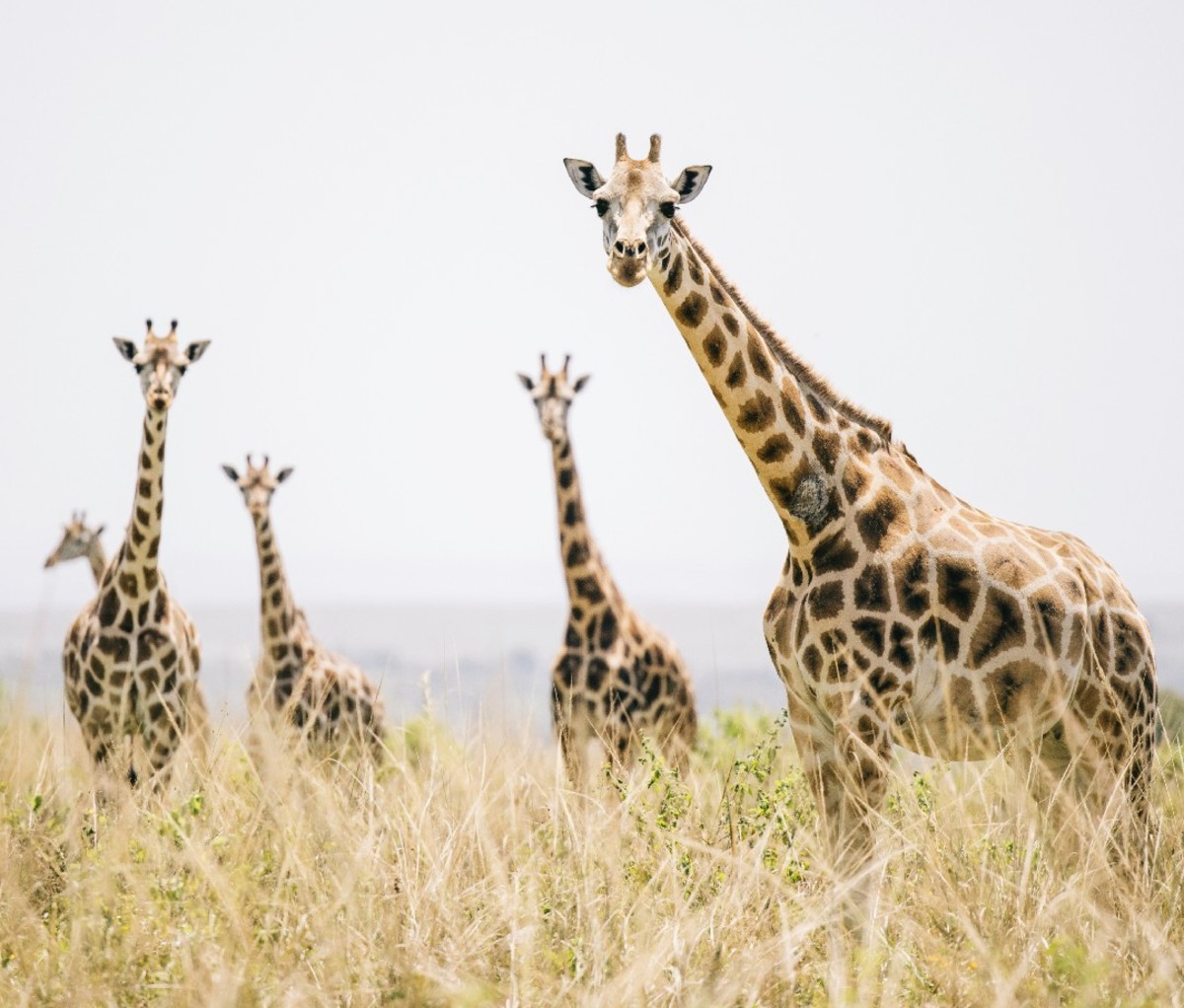
Our route took us from the base of Kilimanjaro all the way to Cape Town, passing through four countries, half a dozen ecological zones, and across roughly 5,000 miles. We drove mostly dirt roads, hoping to see more wildlife, avoid truck traffic, and add to the adventure. At night we camped in tents, grabbing hotel rooms when we wanted a shower or needed a break from each other.
We were lucky to have the support of GoPro, using a mix of their newest cameras to capture the misadventures along the way. They sent enough cameras and batteries for us to be rolling for hours every day—producing over a terabyte of footage. Each day we tightroped between adventurous maybe-these-roads-connect options and safer bail-out plans. In practice, we often selected a third option—spotting a road on the map that looked appealing and taking it.
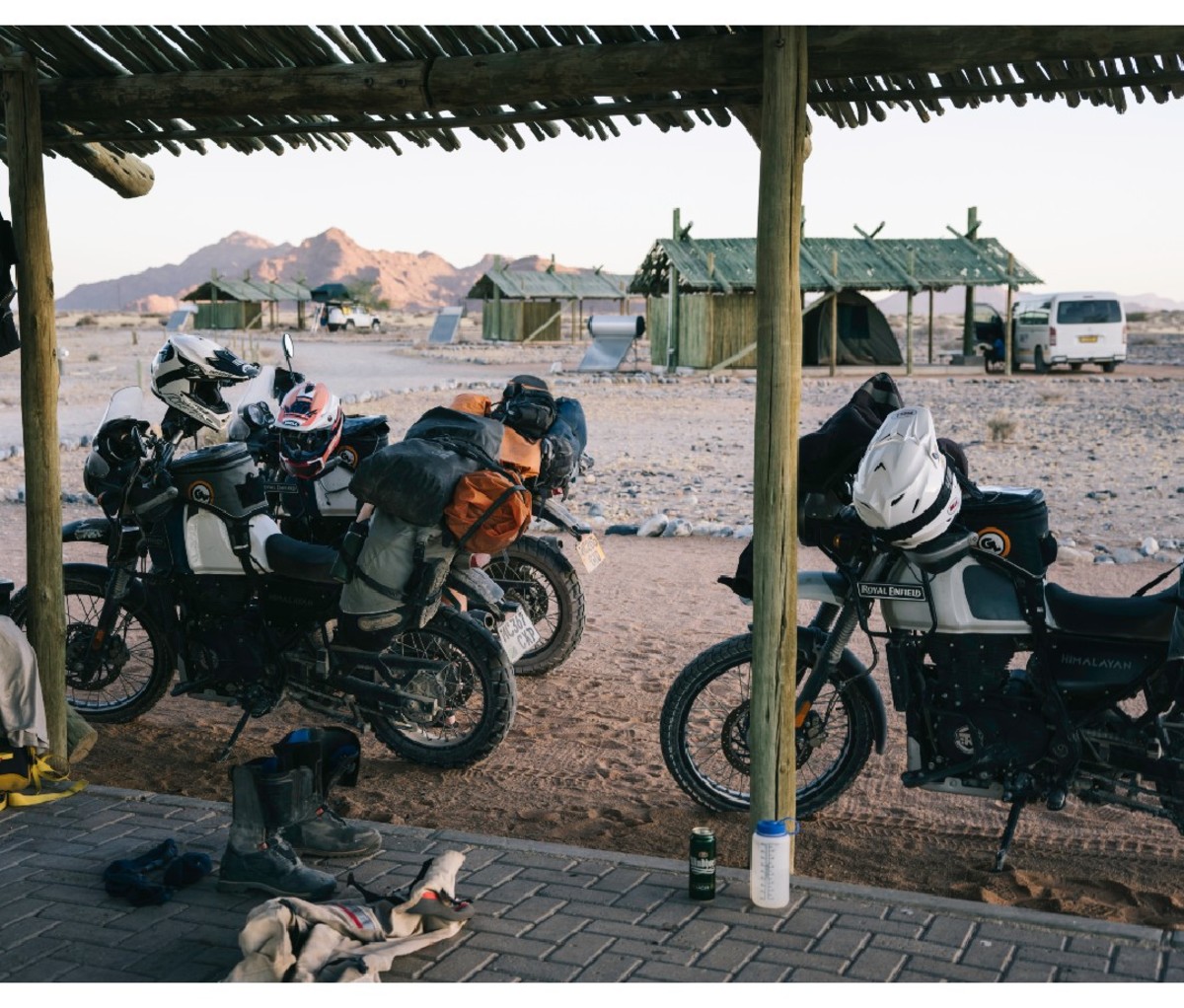
Lesson #3: There Are Places for Light-and-Fast Adventures. Africa Isn’t One of Them.
Taking a taxi from the airport, we drove straight to East African Motorcycles, one of the few dealers in the region. There we met Eric, the owner, and picked up our bikes—Royal Enfield Himalayans We had doubts that these 411cc, single stroke motos would hold up, but those fears dissipated after a day or two. Even by Cape Town, after thousands of miles of hard riding, we didn’t have a single, major mechanical issue.
After signing contracts and celebrating Thanksgiving dinner at a nearby restaurant, we stayed up late, playing Tetris with our Giant Loop saddle and tank bags. This soft luggage offered each of us 100 liters of storage and held up impressively to rain, mud, and scrapes during the trip. We took our time that night, making sure everything was dialed, knowing that we would leave our last big city in the morning. We packed Good-To-Go dehydrated meals, spare clothes, some Nocs, cameras, and tents, pads, and light sleeping bags from Sea-to-Summit, a brand I’ve come to trust over the years.
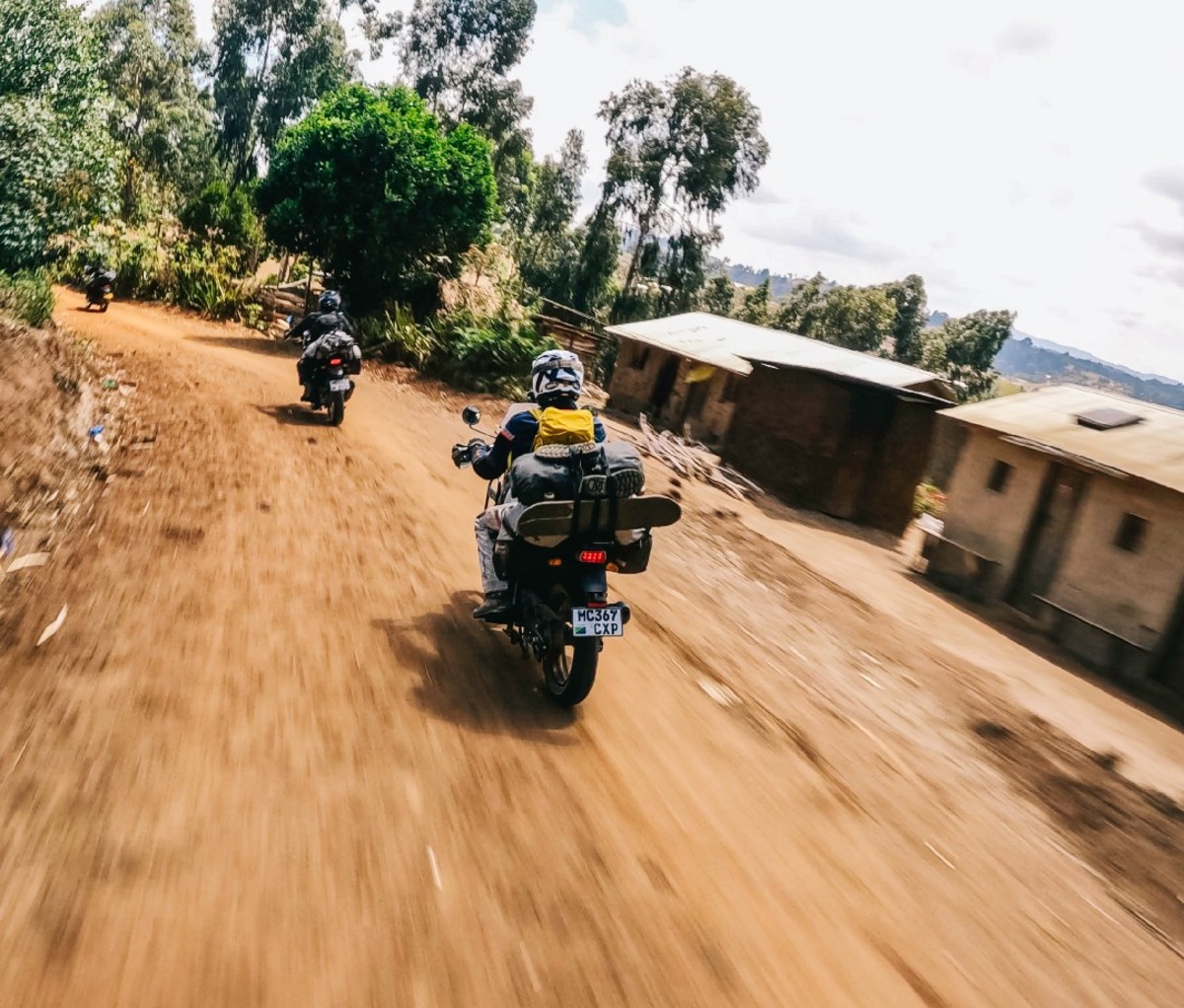
Each of us wore Rev’it! Kits—I stuck with the DIRT series which kept me dry and still breathes well on the hot days. We used Bell Moto 9 helmets with Spy Foundation goggles and interchangeable lenses. The best upgrade we made specifically for this trip was Cardo System Packtalk Bluetooth headsets. These devices attach to helmets and run for 10 hours or more, allowing us to chat easily all day, even while riding at 70mph. This helped us stay safer, avoid obstacles, and made it a collective effort and shared experience.
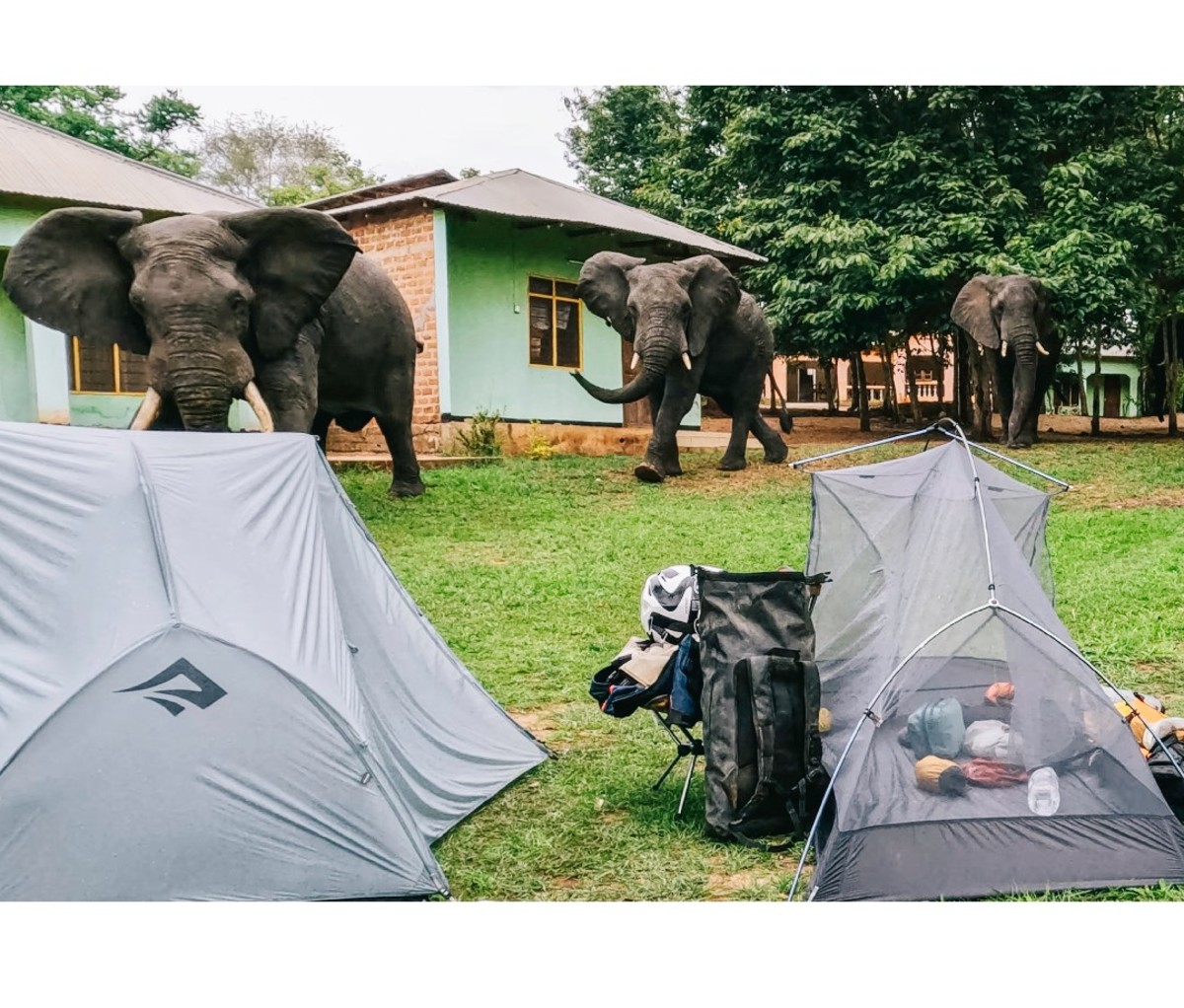
The next morning we bought SIM cards and rode out of town, eager to see how the bikes performed fully loaded on dirt. We navigated with a Zumo XT from Garmin, a burly device that’s much easier to use than a phone. Our excitement got the best of us, popping a flat just 50 miles in, and realizing we didn’t have spare tubes. Out of service and dozens of miles past the last village, we were in a pickle. An hour later, we flagged down a car and got a tip about a “fundi” (moto shop) six miles ahead. Crisis avoided.
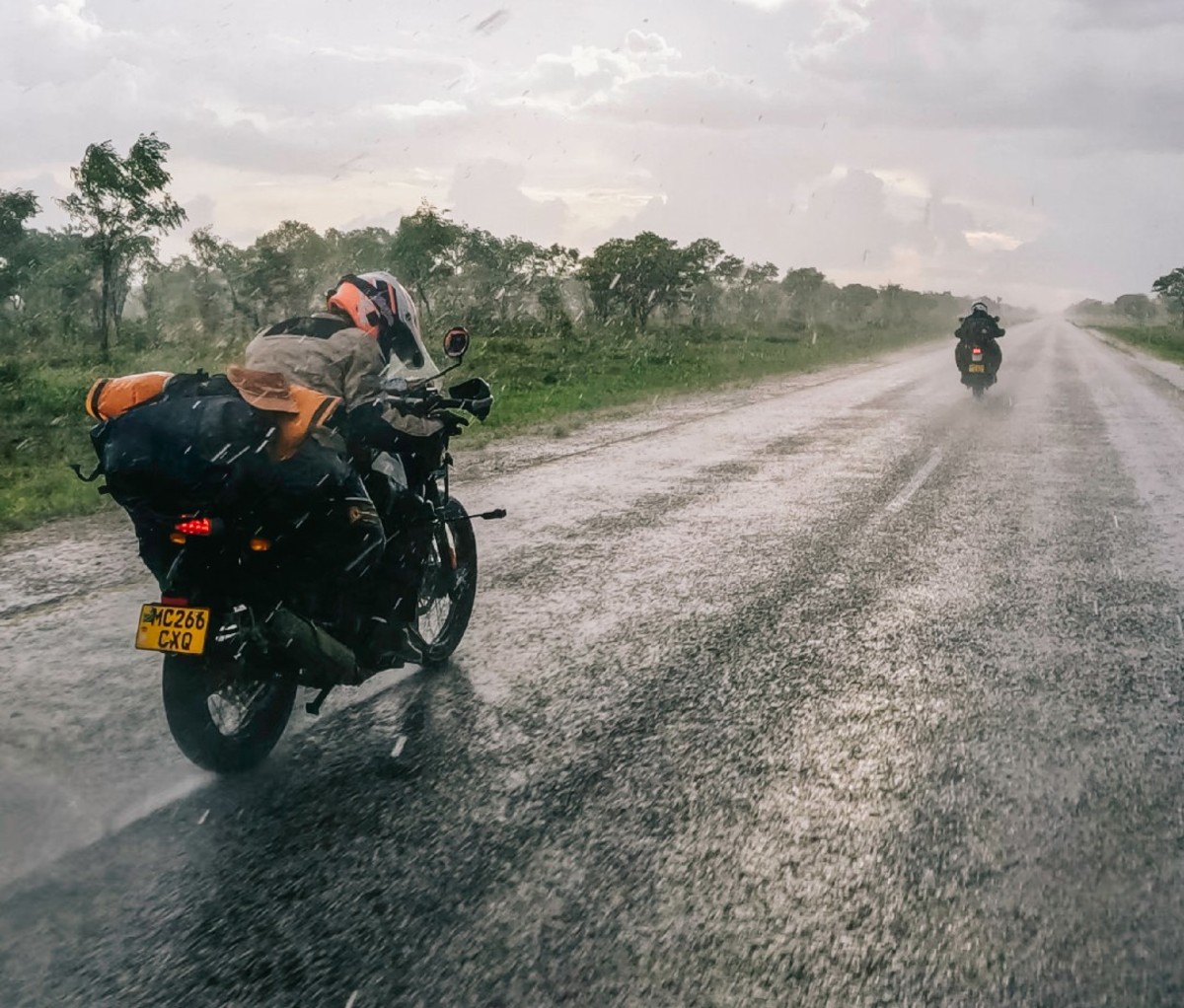
Lesson #4: Trust Strangers (Sometimes)
This type of help—a common occurrence on the trip—restored my faith in people. As a kid I trusted virtually everyone. Sure, part of this was naivety, but growing up in small town America, I didn’t have a reason not to. My family was built on trust. So was my basketball team, my relationship with teachers, and the fabric of my small, Minnesota community.
At some point I’d lost that blanket faith in others. I stopped trusting strangers, big ideas, and handshake agreements. I stopped trusting new foods, half-baked plans, and eye twinkles. Maybe part of this comes with learning from failure. If best intentions haven’t panned out in the past, it’s fair to question them in the future. It’s fair to avoid the pain and disappointment again.
But what you’re really doing is not trusting the process of growth, and not trusting yourself. We met hundreds of people along the way who offered to help. Sure, some just wanted to sell us stuff, but most were decidedly genuine and selfless—particularly for people who don’t have much to give.
From the moto mechanic the first day to lodge hosts giving us a free room during a rain storm to fishermen on the Namibian coast offering us a fresh meal they had just caught, generous strangers turned up repeatedly—kind and curious about what we were doing. This made a huge impression on me. We come from so much privilege and typically just horde it. Back in the U.S., I hope to learn how to trust more people in my daily life.
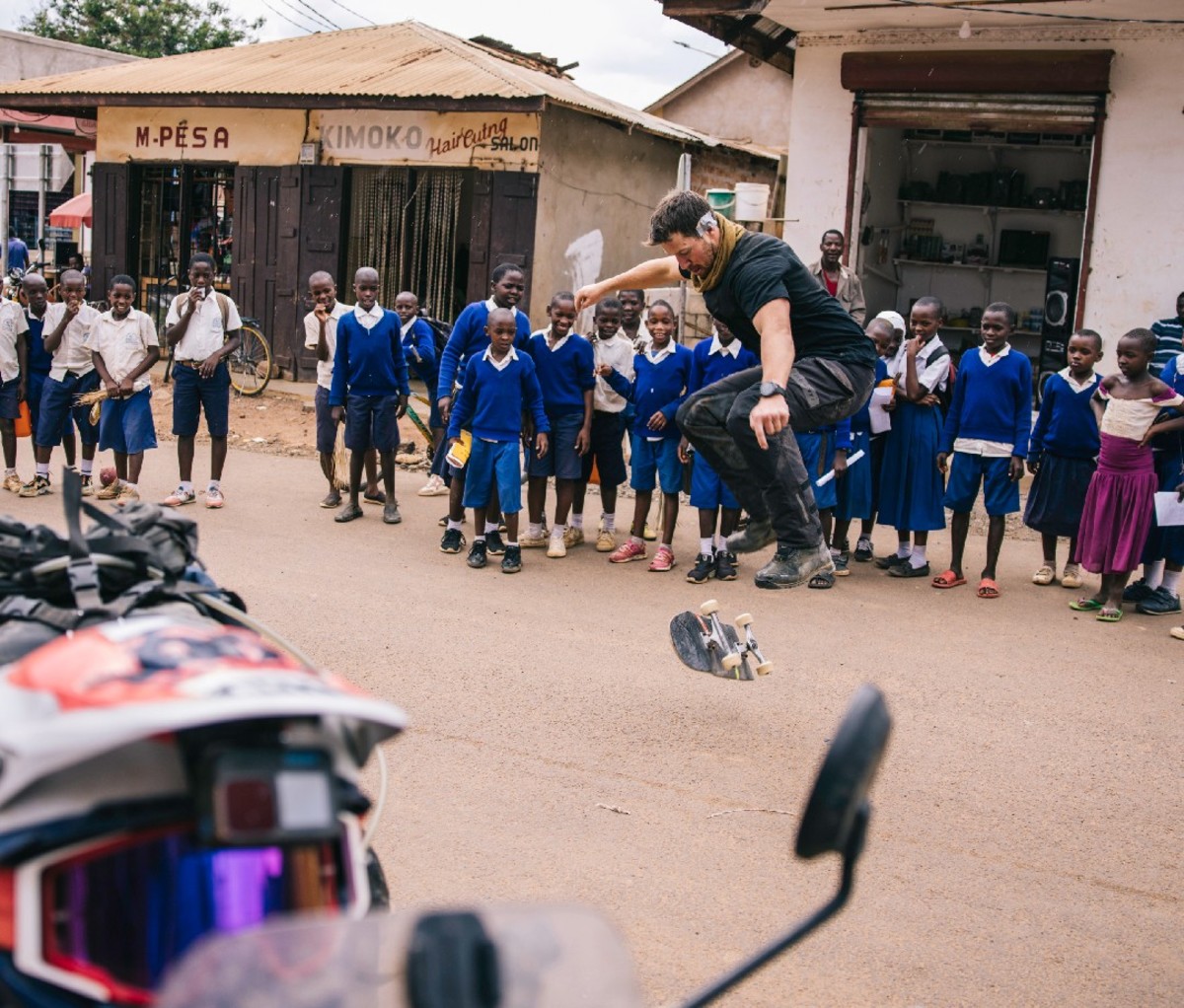
Lesson #5: Good Friends Are the Most Valuable Thing We Have
When I pitched this story, the angle was about all those harrowing experiences I might face riding across one of the most remote and rugged places on earth. The reality turned out to be very different. It wasn’t necessarily smooth all the time, but somehow it felt that way. In spite of my stomach bug, the sketchy falls, the clogged fuel pump, the wrong turns, long days, and heavy rainstorms, the guys I rode with made this trip what it was—far surpassing any temporary setback.






